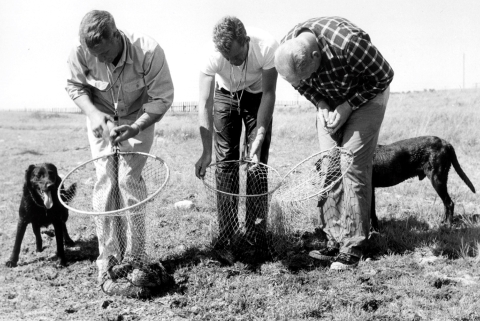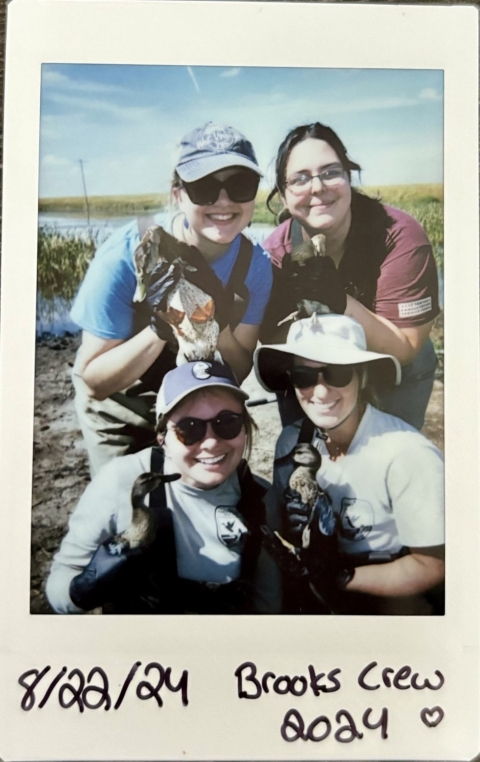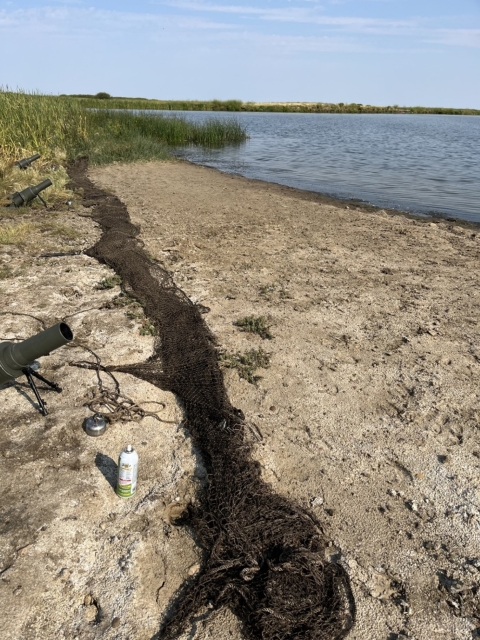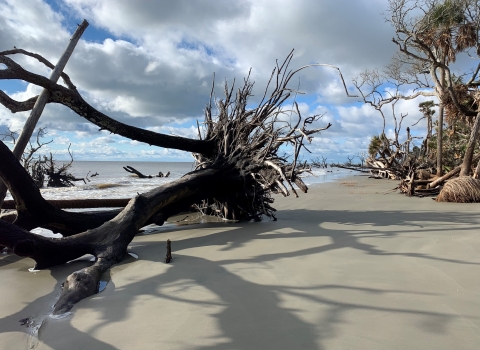Before we delve into this banding season, it might be worthwhile to take a glance at the past and see what it was like banding ducks in the beginning days of our waterfowl banding operations. Waterfowl banding has been an integral part of waterfowl population monitoring and management since the early 1950’s and the Brooks station has been active for the better part of 60 years!
In the 1950’s, banding crews would catch ducks by drive-trapping - walking and boating to corral flightless birds into pens-and then use retrieving dogs to sniff out young birds and bring them back for the crew to band. From past reports, the crews worked tirelessly and yielded a lot of banded birds!
This season we were welcomed into Canada with some much-needed precipitation, albeit that was the only day we had significant rainfall, and the rest of the month was warm and dry. However, conditions were much better compared to last year, with stable water levels and lots of ducks on the landscape.
Our crew this year consisted of Amelia Bard (Wildlife Refuge Specialist, Crab Orchard National Wildlife Refuge), Mariah Letowt (Regulations Biologist, Southeast Region Migratory Birds Permits), and Kirsten Schmidt (Wildlife Biologist, Two Rivers National Wildlife Refuge). During the first week our crew quickly set traps and the birds responded just as quick. Last year, it took the ducks well into our second week to really respond to our traps. So, we were off to a great start!
This year we tried out a new capture technique along with our swim-in traps, called a cannon net launcher. A cannon net launcher uses pressurized air to launch weights that are attached to a net that gets ‘launched’ over the ducks that are feeding and capture them. We maintained several bait sites during the month and set game cameras to monitor what time the ducks were feeding and when best to set-up the net system. Once the cannon net system is set, it can be activated by a remote device, but you must be within range to make sure the ducks are in an area the net can reach. Our first try was a bust. Unfortunately something was startling the ducks from coming onto shore.
Next, we tried in the morning instead of the evening and the flocks of ducks we captured on camera were nowhere in sight. Finally, we constructed a small blind and readied for another evening sit. We had well over 60 mallards on bait and 1 bufflehead! However, we experienced some technical difficulties, and the cannon didn’t launch the net. We learned a lot trying out this new technique and it was great to see that you can get ducks to feed on land, a method that once honed could be useful in years with low water levels. Luckily, our swim-in traps were producing, and we contributed over 700 banded birds to add to the 60 plus years of banding data!











